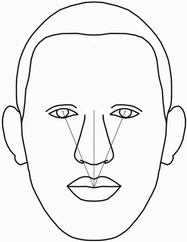D
Deleted member 133675
Inactive
- Joined
- Mar 12, 2025
- Posts
- 4,391
- Reputation
- 8,702
finally a decent threadI feel like ICD is more important than ESR. The reason why I think this is that I see people with bad ESR due to a wide face but the eyes don't look close set.
I was talking to @iblamemygenes yesterday and he made the point that Jordan Barrett doesn't look like he has close set eyes even though his esr is .42/.43, because the actual distance between his eyes is ideal.
To see if eyes are properly spaced I've created a new ratio. The ratio is the (ICD/IPD). (In the perfect face, the ICD should approximately be half the IPD; .5 ). I've also thought of another ratio; (eyeball diameter/IPD). I feel like measuring by the eyeball would be more precise since some people have different medial canthus positions, angles, lengths, bodies, etc. But it might be harder to pinpoint the start and end of the eyeball by looking at a picture. But what do yall think?



















